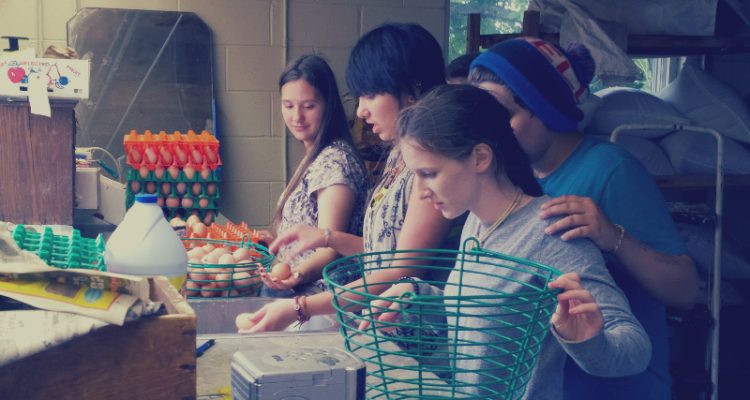I arrived on campus just in time for lunch, which gave me the perfect opportunity to learn all about the organic farm at Olney Friends School, an independent, progressive high school in Barnesville, Ohio. As I munched on homemade lentil loaf and garden-fresh green beans, the campus farmers explained how higher-than-average rainfall had produced a bumper crop of cabbage that they were fermenting into sauerkraut. They speculated that the tomato plant blight might come earlier this year because of the same weather-related issues.
It was clear to me that the campus farm is as much a part of life at Olney as are the library and new Stillwater Science Center. Olney offers an opportunity for students from all over the world to experience life and academics in a unique environment.
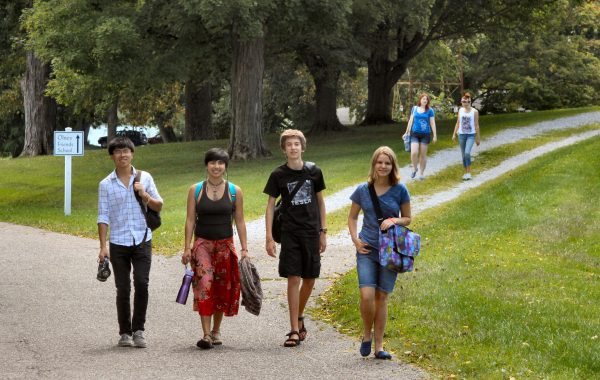
Founded in 1837 by the Ohio Yearly Meeting of the Religious Society of Friends (Quakers), Olney has changed in many ways since its first school building opened in nearby Mt. Pleasant. In the beginning, only Quaker families sent their children to the boarding school, but in the 1960s, Olney opened its doors to students of all faiths. Nonetheless, Olney has drawn on the Quaker traditions of truthfulness, simplicity, non-violence and respect for the good in every person for nearly two centuries. Olney’s website notes: “We sum these up in our Community Rule: Be truthful; Harm no one.”
After lunch I sat down with one of Olney’s rising stars, soon-to-be sophomore Antonia Sigmon, to learn more about how the Olney philosophy works for students. Hailing from nearby St. Clairsville, Antonia was on campus in July to attend the annual session of Friends Music Camp. It was her fourth year to participate in music camp, and it is one reason she decided to attend the school.
Homeschooled from kindergarten on, Antonia and her parents made the decision for her to attend Olney for high school after a survey of other local schools failed to produce a good match. Antonia says she found exactly what she was looking for – and more than she ever expected – at Olney.
We sat in the school gym watching a pickup basketball game and discussed her freshman year. Her blues eyes lit up as she discussed the transition from home school to Olney. “My first month involved stages of adjustment – first to being around so many people, and then to understanding homework due dates and just settling in,” she said. “I love it here. I cannot imagine going anywhere else in the world.”
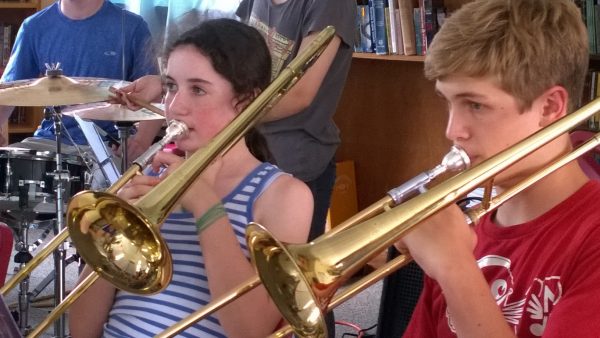
It was clear from talking to this intelligent, articulate student that life at Olney offers more than just tests and rote learning. As Antonia explained, a variety of extracurricular activities are available to Olney students, including sports and music groups. But students can also help to raise their own food as part of Animal Farm Team or Vegetable Farm Team. She said her involvement with Animal Farm Team provided some of her best first-year memories. She assisted in the birth of twin goats and was responsible for night feedings and other tasks to ensure their survival.
Antonia also spoke fondly of learning how to make and sell maple syrup from campus trees and of going on field trips to nearby Captina Creek to study the breeding patterns and general welfare of endangered Hellbender salamanders. Above all, Antonia said, “meeting other students from all over the world has been amazing.” She told me stories of her friends from Russia, China, and Saudi Arabia. And even though she is a day student who sleeps in her bed at home at night, she feels that she is still an integral and valuable part of the community.
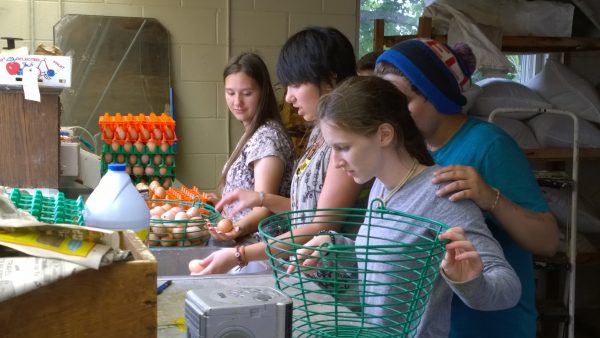
For a school whose graduating class often numbers under 20 students, an enormous amount of work is being done here. In addition to a full-scale farm that includes cattle, chickens, goats and other animals, Olney just opened its new Stillwater Science Center during the 2014-15 school year. Formerly an elementary and preschool, the site was given to Olney by the neighboring Stillwater Monthly Meeting. Olney converted the building once used to educate much younger children into a modern science facility that includes up-to-date chemistry and biology labs and a large gathering room for school and community functions.
But science lessons are not restricted to the classroom. Antonia explained that students regularly take to the grounds and nearby fields and streams to conduct hands-on experiments that not only teach science concepts but add enrichment to humanities courses as well. Jennifer Compston-Strough, Director of Advancement, shared that students and faculty regularly plant thematic gardens to support what students are learning in humanities courses, growing plants such as ancient grains that they might learn about in history. “We consider Olney a 350-acre laboratory,” Jennifer added.
Later in the afternoon, I had the chance to talk with Ken Hinshaw, Olney’s brand new Head of School. And I mean brand new. He had been in his new role just eight days when we sat down in a peaceful guest lounge in one of the most beloved and historic buildings on campus. The Main, as it is known, was constructed in 1876 and is on the National Register of Historic Places.
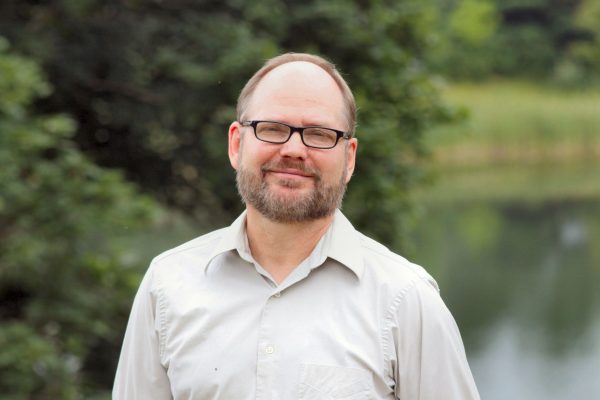
Although new in his position as head of school, Ken is anything but new to Olney. His father was Head of School in the 1950s, and Ken spent the first five years of his life on campus. His family moved on later, but Ken returned to Olney to attend high school and be close to family who lived in the region. From there he went on to college and eventually earned an MBA. He later taught biology and became the head at Scattergood Friends School in Iowa. When he learned that Olney was searching for a new head in anticipation of Charlie Szumilas’ retirement, he asked himself what he could offer Olney. It seems he has quite a bit to give, and his first big initiative is rolling out when classes resume this fall.
When he arrived at Olney this past February, Ken began learning about the community of faculty and students. One of the first steps he took was to ask community members to create a list of concepts they wanted to explore during the school year. After several brainstorming sessions, he received a list of 250 questions. From that list, the faculty and students settled on 50 topics to study during the 2015-16 school year. They range from conventional courses of study to wilderness survival and making the most of technology.
Ken then asked the faculty to look at their courses and break them into pieces of manageable, demonstrable information. After all, he noted, Olney is a college preparatory school; therefore, learning what is needed for college success is as important as life lessons. Once those course pieces were derived, he then asked faculty to develop objectives and means for determining completion. That way, when each student is ready, he or she can prove mastery over each concept.
Ken gave an example of an upcoming project he plans to carry out. Students will be involved in designing and constructing an indoor herb garden for the Olney kitchen. By completing the project, students will learn and apply valuable math and science concepts, such as photosynthesis. When the student feels that he or she understands each concept, then that student has the opportunity to demonstrate mastery.
Ken refers to the indoor herb garden as an Endeavor, and the entire school year is designed around multiple Endeavors that allow students to learn and apply new concepts. Another Endeavor for the upcoming year is “An Owner’s Guide to Oneself,” which will be required for the entire student body and will help students determine how they learn, how they study and strategies they can use that will work best for them as individuals. Students will also be learning how to design and build a “tiny house” in one of their Endeavors.
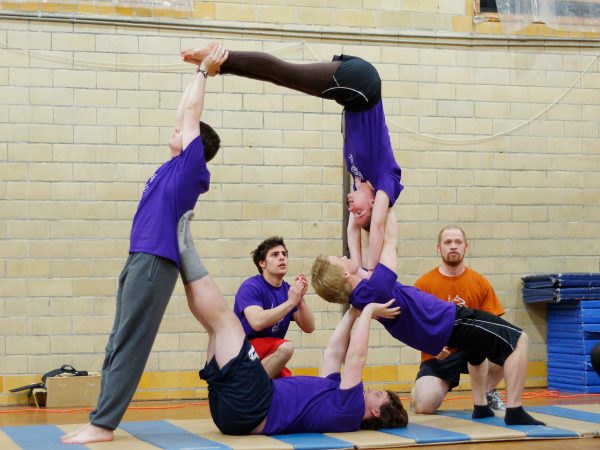
Olney is accredited by the Independent Schools Association of the Central States. The school meets criteria developed by the membership organization, which is composed of more than 230 independent schools from 13 states of the Midwest region. Within these guidelines, though, Olney has tremendous flexibility to carry out its ambitious new curriculum, which is largely free from standardized testing requirements that currently plague many public schools.
Such freedom is exciting to the entire Olney community, including Micah Brownstein, Dean of Students. “Olney has always been ahead of its time,” he said. “We recycled before most other campuses. We added solar panels before other schools even considered it. And our 1914-1915 students participated in one of the United States’ first peace marches. They were against World War I.” Brownstein hopes that the same is true with the new curriculum. Olney is blazing a trail that he believes other schools will want to follow.
Towards the end of my visit, I asked where students from Olney go after they graduate. Given that they are required to be accepted at a four-year college before they can earn their diplomas, many of Olney’s graduates pursue degrees. Most of them, according to Jennifer, attend small colleges, such as Haverford College just outside of Philadelphia, but the class of 2015 has been accepted at a variety of universities, including Appalachian State and Cornell.
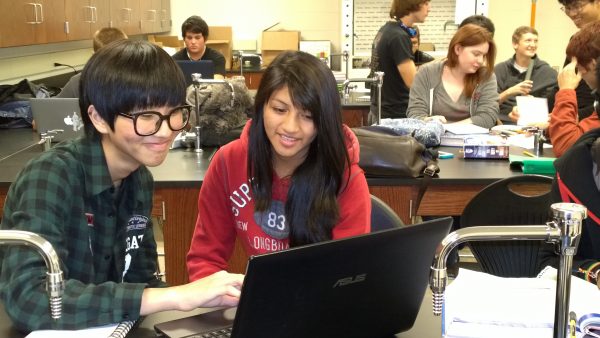
It is clear, though, that no matter where they go in life, their experiences at Olney stick with them. They spend four years focusing on academics and learning about life. The nature of the Olney community lends itself to a holistic experience that keeps alums like Ken coming back for more. He dreams of the day when students will say, “I have never worked harder and I have never learned more and I don’t even feel like I’m in school.”
Reflecting on my visit, I hope that someday school as we know it today is more like Olney — creative, thoughtful and organic. Learning can and should be both planned and spontaneous, just like life.


